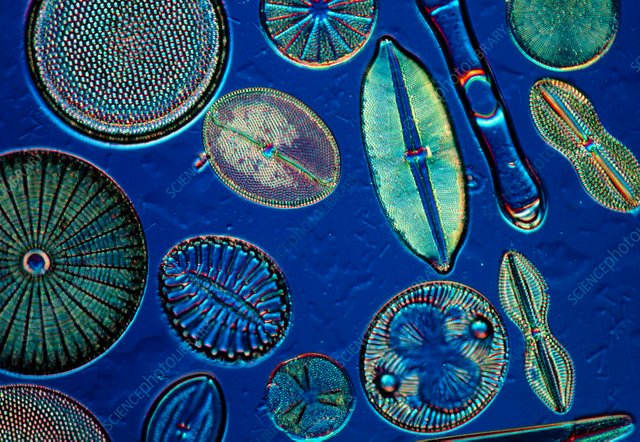Today I'm going to write an article related with my study area. I will hope you are interest with it. They are phytoplankton. Diatoms are very important contributors to plankton primary production. Diatoms began to dominate in the Cretaceous period about 10 C million years ago.
Their size range is 0.2 millimeter to 2 micrometers. Diatoms have rounded, elongated, branched and triangular shapes. The higher range of frustule composed by silica. It gives optical, physical, and chemical properties of glass. As I said, they can contribute to plankton primary production. Therefore, they can absorb 55% of energy of sunlight and they can convert to carbohydrates. The energy store as a fatty acid and oils.
Most diatoms can appear in Yellow green color. Because of those chlorophylls are accompanied with xanthophylls. They reproduce by dividing in half and drifting apart and new value is generated within the old one. Diatoms mainly divided two groups. There are Centric diatoms and pennate diatoms. Most of both diatoms are non-motile.
Centric diatoms They are radially symmetrical. Their frustule shape like a petri dish. Example is Thalassiosira.
Pennate diatoms They are bilaterally symmetrical. Pennate diatoms body consist with elongated shape along the rapes. Rapes is a mid-line of the body in pennate diatoms.
Diatoms can find marine water, fresh water, and soil. Mostly can found upwelling costal region. Because of that upwelling region has more nutrient concentration than other oceanic area. Diatoms are very important to define the water quality and the determine environmental conditions in history. In the postmortem cases diatoms are used to decide that how death was occurred. If it is a murder before sink the body in water, the diatom concentration is low. If the body has high diatom concentration it can be drowning.
I like to tell there are so many things we can learn in the world. There are more interesting organisms live world-wide, but some are unfortunately cannot see using naked eye.
